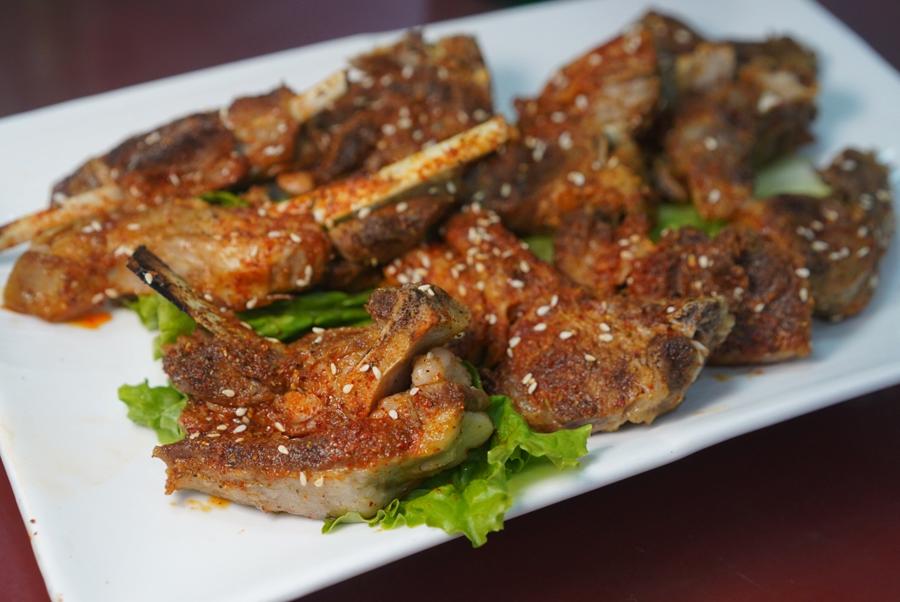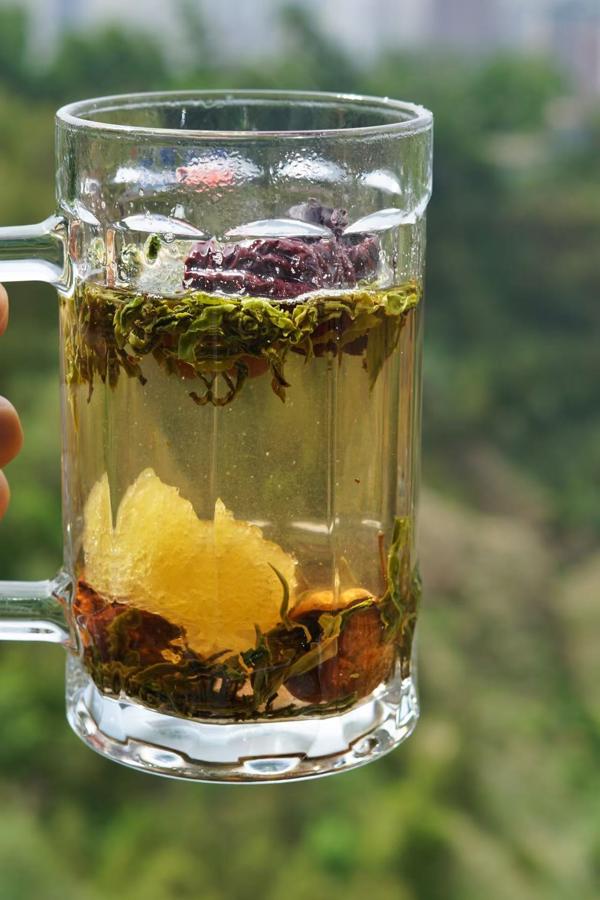Hotel Review: Mondrian Singapore Duxton – A Luxurious Retreat in the Heart of Duxton Hill
A welcoming stay in the Lion City

January 24, 2025
Updated January 27, 2025
Nestled in the northwest region of China, Ningxia is a province that beautifully blends history, culture, and stunning natural landscapes. Bordered by the Inner Mongolia Autonomous Region to the north and west, Gansu Province to the south, and Shaanxi Province to the east, Ningxia boasts the majestic Helan Mountains, the sprawling Tengger Desert and the winding Yellow River in its vicinity.


Established as a province in 1929, Ningxia underwent various administrative changes, ultimately becoming an autonomous region in 1958. Its history is rich, with the Western Xia Dynasty (also known as the Tangut Empire) playing a significant role in shaping the region over a millennium ago.

Ningxia is also home to the Hui people, a Muslim ethnic minority, along with Han and Mongol people, that together contribute greatly to Ningxia's unique cultural tapestry. As the Hui minority makes up 36% of Ningxia, Hui influence in cuisine, architecture, local customs, dress, and even language can be noted across the region. As travelers explore Ningxia, they can delve into this Islamic heritage, while also appreciating the area’s breathtaking landscapes, including the expansive Gobi Desert.

The province has recently gained recognition for its burgeoning wine industry, with wineries producing blends that have captured international attention, earning Ningxia the moniker "Bordeaux of the East."


For those seeking an off-the-beaten-path adventure in China, Ningxia offers a remarkable experience filled with history, diverse culture, and stunning scenery. Whether you’re sipping wine at a local vineyard, gazing at the stars in the desert, or enjoying the vibrant flavors of its night market, 48 hours in Ningxia will leave visitors with a desire to return.
No trip to Ningxia is complete without partaking in its renowned wine culture. Over the last 20 years, Ningxia’s wine industry has expanded at an exponential pace. Nowadays, Ningxia is home to 40,000 hectares of land dedicated to wine cultivation with annual production of 138 million bottles, exported to over 40 countries, resulting in a 34 million RMB ($4.76 billion) wine industry.


As one of China's premier wine regions, Ningxia has developed a reputation for producing high-quality wines, particularly from grapes like Cabernet Sauvignon and Chardonnay. Shielded from desert sandstorms by the Helan Mountains, Ningxia enjoys on average 3,100 hours of sunshine per year, while receiving less than 200mm of rain, resulting in grapes with ideal levels of acidity for wine production.

The region is home to over 225 wineries, each with its own charm and offerings. A visit to wineries such as Silvery Heights Winery, known for its friendly atmosphere and excellent value wines, or Domaine Des Aromes, a small family-owned vineyard, is a must. Many wineries offer tours that allow guests to immerse themselves in the winemaking process, from grape harvesting to tasting the final product. Whether you are a wine connoisseur or a casual enthusiast, the experience of sipping wine while overlooking the picturesque Helan Mountains is unforgettable.

The Shapotou Sand Dunes are considered to be one of China's Five Most Beautiful Deserts. The Shapotou Scenic Area is located in Zhongwei City at the southeastern edge of the Tengger Desert, Shapotou features stunning landscapes where rolling dunes meet the Yellow River. Visitors can participate in various activities such as camel riding, sandboarding, cable car riding, sand surfing/sledding, and even taking a ride on the world’s first desert railway.


The area is also home to China's largest natural sand skating ground, making it a playground for outdoor adventurers.


For those who wish to stay overnight, the high-end Desert Star Hotel (星星酒店) offers a glamping experience under the stars, providing a luxurious way to enjoy the splendor of the desert. Featuring anything from spacious tents equipped with comfortable king-size beds and modern amenities to expansive villas that can house an entire family, guests can relax in a variety of rooms to suit their needs and budget (the hotel has 177 in total!), swim in the pool, visit the hotel bar and restaurant, go stargazing with onsite telescopes, and enjoy the desert luxe life.

After a day of exploration, guests can unwind under the dazzling night sky while enjoying evening fireworks. The hotel also offers buffet meals for breakfast and dinner, allowing visitors to savor local cuisine without leaving the comfort of their accommodation.

Tickets to enter the Shapotou area are RMB100 per person during peak season (April-October) and RMB65 per person during off season (November to March).


As the sun sets, the Yinchuan Huaiyuan Night Market comes alive with vibrant lights and mouthwatering aromas. This bustling market, starting nightly around 7PM, offers a feast for the senses with endless stalls serving delicious local dishes. From succulent lamb skewers and hand-pulled noodles to sweet treats like red date cakes and milky rice desserts, the night market is a true paradise for food lovers. The lively atmosphere, combined with the chance to try a variety of dishes, makes for a memorable evening exploring the region’s robust gastronomic heritage.
Western Xia Imperial Tombs: Discover the largest surviving archaeological site of the Western Xia Dynasty, featuring nine imperial tombs and numerous additional tombs, set against the backdrop of the Helan Mountains.
108 Buddhist Pagodas: Explore the stunning symmetrical structure of these pagodas, located about 1 hour and 20 minutes south of Yinchuan, offering picturesque views and a glimpse into the region’s spiritual heritage.
Helan Mountains: A breathtaking mountain range known for its ancient rock art, with over 6,000 carvings dating back to 770 BC, offering hiking opportunities and stunning natural scenery.


Hong Manao Goji Berry Farm: Visit this famous farm to pick goji berries, a staple of the region known for its health benefits and delicious flavor, often featured in local dishes and teas.

Excursion into Inner Mongolia: For an extended adventure, consider a two-day trip to Inner Mongolia, where visitors can enjoy camel rides, desert hikes, and experience life in a traditional yurt while savoring fire-grilled lamb.



Lamb is the pride of Ningxia's cuisine, deeply rooted in the traditions of the Hui people. Hand-pulled lamb, boiled and served tender and flavorful, is a local favorite that showcases the quality of the region's meat, best enjoyed dunked in a fiery cumin-forward spice blend. Lamb can be found boiled, in hot pots, roasted, fried, or grilled on skewers. The gamey succulence of Ningxia's lamb is unparalleled, and must-try dishes include hand-pulled lamb, lamb soup with roasted bread, deep-fried minced lamb balls, boiled lamb intestine soup, and more, each offering a taste of local culinary traditions.

Nianpi is a traditional cold noodle dish that features a dough made from mung bean and sorghum flour. Tossed in a tangy marinade of aged vinegar and chili oil, plus mixed fresh vegetables and cubes of plush wheat gluten, it offers a smooth, sour, and spicy flavor, ideal for warm weather. This street snack – found everywhere from noodle houses to night markets to upscale restaurants – is a refreshing way to experience Ningxia’s culinary offerings.

Known as one of the treasures of Ningxia, goji berries are a must-try in Ningxia. These small, red beads are celebrated for their health benefits and are used in various dishes and drinks. Goji berries can be enjoyed fresh, dried, in soups, and in desserts. The region's goji berries are renowned for their quality, making them an essential part of the Ningxia culinary experience.

Sand onions (or sha cong), known also as Mongolian leek, is a crunchy and flavorful vegetable that thrives in Ningxia's climate. Often stir-fried with spices and oil, it serves as a delicious side dish that complements the region's hearty meat plates. Its fresh sharpness enhances any meal.

This traditional tea is a delightful mix of dried fruits, nuts, and herbs, resulting in a sweet and aromatic brew. The recipe can vary, but common ingredients include dried longan, chrysanthemum flowers, and of course, goji berries. Enjoying a cup of Eight Treasures Tea not only refreshes the palate but also offers a taste of Ningxia's rich herbal traditions.

From Shanghai to Yinchuan Hedong International Airport, there are numerous 3-hour direct flights operating daily, costing roughly 900-1,500RMB roundtrip. A taxi from the airport into the city will set you back RMB45-60, and most trips within the city limit will be a pocket-friendly RMB10-40.

Hotels in Yinchuan city are quite affordable compared to Shanghai, with budget hotels at roughly RMB300 per night and higher-end stays starting at just RMB500 per night. Food is similarly pocket-friendly, with street food meals clocking in around RMB25-50 per person, and restaurant meals from RMB50-100 per person.

All-inclusive group tours to Inner Mongolia – including food, desert yurt accommodation, camel riding, and transport to Inner Mongolia and back to Yinchuan – begin at RMB2,250 per person for 2 days/1 night.

My name is Sophie Steiner, and welcome to my food-focused travel blog. This is a place to discover where and what to eat, drink, and do in Shanghai, Asia, and beyond. As an American based in Shanghai since 2015 as a food, beverage, travel, and lifestyle writer, I bring you the latest news on all things food and travel.
Your email address will not be published.
Be the first to comment!